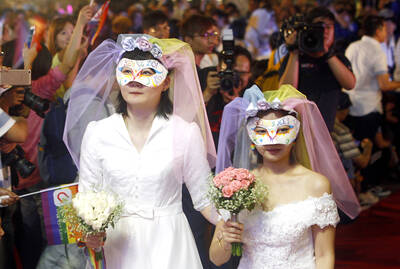The early voyages of the Europeans to the East were appallingly risky affairs. Navigation was still an
uncertain business, the wooden ships were easily damaged by rocks or ice, food and drink were often inadequate, the vessels were subject to attack by locals eager for bounty, and there was little knowledge of how to protect crews from disease by a healthy diet, and no immunity to the tropical diseases encountered on land. Ghostly ships like those in Coleridge's Rhyme of the Ancient Mariner or Wagner's The Flying Dutchman were

common, their crews dying and their progress in the hands of half-crazed maniacs desperate for rest. These were commercial enterprises set up in London, Lisbon or Amsterdam trying unknown routes to destinations often only learnt about through hearsay. Success was chancy at best, and the men who set sail not surprisingly a ragged bunch.
Giles Milton has made a career for himself by re-telling in popular form tales from what in retrospect is grandly called Europe's Age of Exploration. His previous ventures in this genre have included a look at the Elizabethans in Virginia (Big Chief Elizabeth) and an investigation into the very lucrative spice trade in what is now Indonesia (Nathaniel's Nutmeg).
This time he tells the story of the first Englishman ever to set foot in Japan, the 17th century rough-neck adventurer William Adams.
Adams set out for the East in June 1598, serving with a Dutch fleet of five ships. It opted for the southwestern route, around South America, and experienced all the usual horrors of scurvy, starvation, attacks by natives, gales blowing the ships off course, and captains frequently only vaguely knowing where they were. Only one of the five ships made it to Japan, arriving in April 1600 with all the crew sick and many dying. Of the 24 men who landed, only seven could stand.
Adams stayed in Japan for the rest of his life, 20 years in all, and became an important figure once an English "factory" (the name used at the time for a trading settlement complete with warehouses) was established. He visited what are now Thailand and Vietnam, and was said to be able to walk into the presence of emperors and talk to them when the most prominent officials in the land were refused admission. He certainly enjoyed his enhanced status in the East, like many an expatriate today, and quite possibly in addition simply couldn't bear to contemplate the rigors of a return voyage home.
Giles Milton's method is to read up the authorities on the period (his chapter-by-chapter bibliographies are lovingly detailed) and then produce a colorful but not irresponsible account in his own words. This is not original historical research, but it is popularization of a reputable, and in many ways admirable, kind.
Adams' adventures in Japan are not enough to fill a whole volume, so Milton frames his account with chapters on the Portuguese voyagers who were the first Europeans to get there, the rivalry between the English and the Dutch for the profits of oriental trade, earlier attempts to reach the east by sailing along the north coast of Russia, the successes of Portuguese missionaries in southern Japan and their subsequent terrible persecution, and so on. These put Adams' experiences into context, and help to make up an entertaining, informative and readable book.
For the material pertaining to Adams himself, Milton has been considerably helped by the publication of The British Factory in Japan 1613-23 (two volumes, 1991). These books contain the letters and logbooks of Adams and his colleagues in full. Adams' diaries have always been accessible to researchers, but Milton comments that they are "extremely hard to decipher." Their publication in a printed edition was probably what gave him the idea for this book -- as someone specializing in the period, he would have instantly registered the possibilities inherent in their appearance.
Milton's style is roistering and casual. The following passages can be taken as typical: "The Trouw's crew were made of sterner stuff. Throwing caution to the winds, they pointed their vessel west and headed for the East Indies." Queen Elizabeth "chose to ignore Captain Pet's Arctic failure, condemning him to return to the obscurity from which he had briefly escaped. Preferring to back a winner, she prepared a lavish celebration in honor of Drake's triumph in the tropics ... it was a splendid affair."
"When Ferdinand Magellan had crossed the Pacific, they had only survived by eating stewed mice and sawdust."
Anything amusing, outrageous or grotesque is highlighted. It's not that Milton offers a frivolous account of history exactly. Rather, he extracts vivid and bizarre details from his sources and binds them together with a breezy style. The result is history without tears, something palatable and likely to be highly popular, but it isn't in essence a perversion of the truth. Readers deriving their knowledge from these books will be amused, but they won't be led astray. Milton is a cheerful and entertaining guide, though no one will gain a PhD by using his books as source material.
Adams died in 1620, three years before all the English merchants were forced to leave Japan. At one time James I in London had written letters to the "king" of Japan, but now that episode was over. The brief English trading presence in Japan was all but forgotten, and the country would have to be discovered all over again in the 19th century.
These early figures, with their quarrels over their local lovers, their influence out of all proportion to their real capabilities, and their consequently inflated ideas of their own importance, are amusing precursors of the resident expatriates in Japan, Hong Kong and Taiwan today. The horrors of the journey out are for the most part things of the past, but the enticements and rewards for living so far away from home, and the psychological and economic reasons for doing so, remain little changed. If you bear this in mind while reading Samurai William it becomes still more entertaining than it is in its own right. It's more likely, therefore, to give pleasure in Tokyo or Taipei than it is even in New York or London, and that's saying quite a lot.

This month the government ordered a one-year block of Xiaohongshu (小紅書) or Rednote, a Chinese social media platform with more than 3 million users in Taiwan. The government pointed to widespread fraud activity on the platform, along with cybersecurity failures. Officials said that they had reached out to the company and asked it to change. However, they received no response. The pro-China parties, the Chinese Nationalist Party (KMT) and Taiwan People’s Party (TPP), immediately swung into action, denouncing the ban as an attack on free speech. This “free speech” claim was then echoed by the People’s Republic of China (PRC),

Exceptions to the rule are sometimes revealing. For a brief few years, there was an emerging ideological split between the Democratic Progressive Party (DPP) and Chinese Nationalist Party (KMT) that appeared to be pushing the DPP in a direction that would be considered more liberal, and the KMT more conservative. In the previous column, “The KMT-DPP’s bureaucrat-led developmental state” (Dec. 11, page 12), we examined how Taiwan’s democratic system developed, and how both the two main parties largely accepted a similar consensus on how Taiwan should be run domestically and did not split along the left-right lines more familiar in

Many people in Taiwan first learned about universal basic income (UBI) — the idea that the government should provide regular, no-strings-attached payments to each citizen — in 2019. While seeking the Democratic nomination for the 2020 US presidential election, Andrew Yang, a politician of Taiwanese descent, said that, if elected, he’d institute a UBI of US$1,000 per month to “get the economic boot off of people’s throats, allowing them to lift their heads up, breathe, and get excited for the future.” His campaign petered out, but the concept of UBI hasn’t gone away. Throughout the industrialized world, there are fears that

The Democratic Progressive Party (DPP) controlled Executive Yuan (often called the Cabinet) finally fired back at the opposition-controlled Legislative Yuan in their ongoing struggle for control. The opposition Chinese Nationalist Party (KMT) and Taiwan People’s Party (TPP) acted surprised and outraged, but they should have seen it coming. Taiwan is now in a full-blown constitutional crisis. There are still peaceful ways out of this conflict, but with the KMT and TPP leadership in the hands of hardliners and the DPP having lost all patience, there is an alarming chance things could spiral out of control, threatening Taiwan’s democracy. This is no